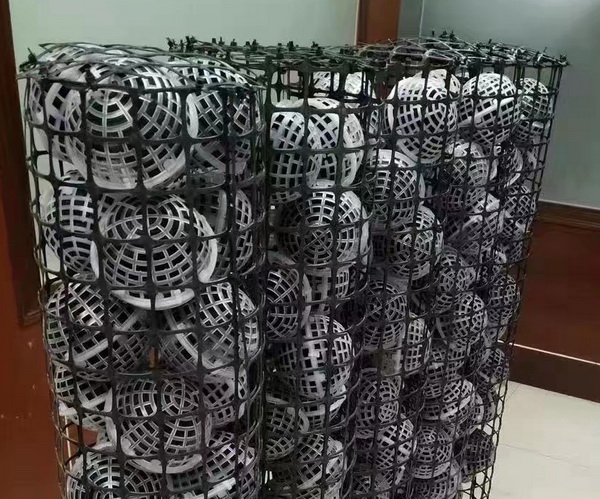About Nitrifying bacteria
Nitrifying bacteria is a general term for a class of bacteria. In fact, it contains two groups of nitrifying bacteria and nitrifying bacteria. Nitrifying bacteria are responsible for converting soluble nitrogenous substances into nitrites. Nitrifying bacteria are responsible for reoxidizing nitrite to nitrate. In the process. You have to have the oxidant involved and you don't have to have the carbon involved. Therefore, nitrifying bacteria is a kind of aerobic autotrophic bacteria.
In aquaculture. Due to feeding and excretion by aquaculture animals, large amounts of organic matter can accumulate in the water. These organisms contain sugars, proteins, fats and more. Proteins contain a lot of nitrogen. After being digested by animals and bacteria. Will become short chain peptides, amino acids and other small molecules. These small nitrogen-containing molecules continue to be taken care of by bacteria. It breaks down into ammonia and nitrite. Nitrifying bacteria oxidize ammonia to nitrite and finally to nitrate in the presence of sufficient dissolved oxygen. Among them, ammonia and nitrite are toxic to aquatic products and animals. In accordance with the state fishery water quality standards. The concentration of ammonia in the cultured water should not exceed 0.2 mg/l and the concentration of nitrite should not exceed 0.02 mg/l. When these two substances exceed certain standards. The fish will develop symptoms of poisoning. Nitrites and oxygen compete for proteins in the sex's blood, reducing the amount of oxygen in the animal's blood and causing toxic symptoms. The symptoms of nitrite poisoning in fish and shrimp include redness of gills, decreased resistance, slow swimming and floating head. Shrimps can show symptoms such as redness of the limbs. Reduced resistance can lead to a chain reaction of other fish and shrimp diseases, such as harmful bacteria or viruses can take advantage.

In a high-density recirculating aquaculture system. There are many kinds of bacteria. From the decomposition of nitrogen-containing organic matter to the final product nitrate requires a large number of aerobic decomposing bacteria. The reproductive capacity of these decomposing bacteria far exceeds that of the nitrifying bacteria. Therefore, recirculating aquaculture equipment is very important to the system. Only when the organic nitrogen in the water is separated from the water in the first time can they be prevented from further becoming ammonia and nitrite. We grow nitrifying bacteria by building a biofilter. When cultivating nitrifying bacteria, the following water quality conditions should be met:
Ambient temperature
Nitrifying bacteria can multiply between 10 and 35 degrees. But the optimum temperature range for growth and reproduction is between 20 and 30 degrees Celsius. Therefore, our water temperature had better be regulated within this temperature range.
ph
The pH of water also affects the growth and reproduction of nitrifying bacteria. When the pH is too low or too high, the growth and reproduction of nitrifying bacteria are inhibited obviously. His optimal PH is 6.5 to 8.5. This is also the appropriate PH for most aquatic animals. Under the conditions of cultivation in the outer pond, the PH value of the water in the pond fluctuates greatly during the day due to the photosynthesis of algae. This will affect the growth and reproduction of nitrifying bacteria.
Dissolved oxygen
Nitrifying bacteria need oxygen to oxidize ammonia to nitrite, or to convert nitrite to nitrate. And this oxygen is the oxygen dissolved in water. Therefore, it is very important to keep enough dissolved oxygen in aquaculture water. In general, dissolved oxygen in water should not be less than 5 mg/l. Both the nitrifying bacteria and the two animals. The higher the dissolved oxygen, the faster the growth rate.
The concentration of ammonia and nitrite
Due to the characteristics of nitrifying bacteria, a certain concentration of ammonia nitrogen and nitrite should be maintained in water. Thus providing a constant supply of "food" for the nitrifying bacteria. Therefore, in aquaculture, the concentration of ammonia nitrogen and nitrates should be controlled within a reasonable range, rather than the lower the better.

Competition from other bacteria
In recirculating aquaculture system, nitrifying bacteria have to face the competitive pressure of decomposing bacteria and other strong bacteria. Decomposing bacteria are indispensable in the whole chemical chain, and the growth rate of nitrifying bacteria is much lower than that of decomposing bacteria. This requires us to regularly put certain nitrifying bacteria into the water to enhance the final effect of biological filtration by means of human interference.
Selection of filter material for biological filtration
Nitrifying bacteria like to attach to certain attachments. Porous biological fillers can increase the number of nitrifying bacteria. Biological filler requirements must not affect the chemical composition of the cultured water body. At the same time, it is easy for the membrane to fall off after aging. Theoretically, the larger the specific surface area of the filler, the easier it is for bacteria to hang the film. But there should also be a balance between demembraning and conducive to bacterial reproduction.

